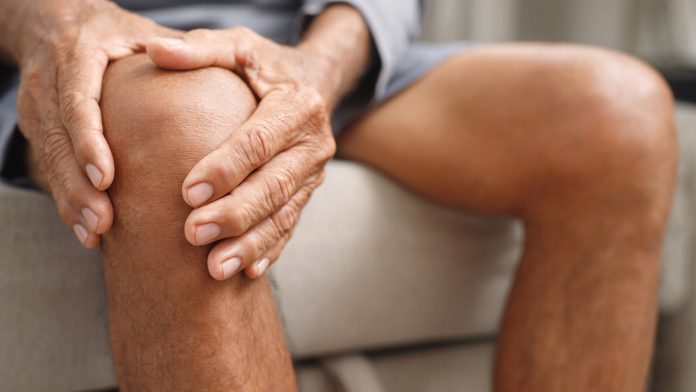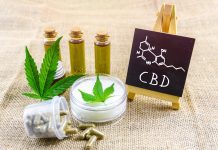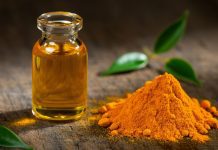
In this article, we take a look at seven methods that are scientifically supported and clinically proven to help ease chronic pain.
For the millions of people who suffer from chronic pain daily, finding ways to relieve it can seem daunting. You may not have found your lifeline yet, but there’s still hope. From traditional medicine to modern techniques, there are numerous ways to relieve discomfort and enhance your overall well-being for the better.
Cold Therapy
Cold therapy is one of the most effective ways to decrease inflammation and ultimately relieve pain. By using cold packs or submerging the inflamed area in cold water, blood circulation to the specific region is restricted and so minimises swelling.
Cold therapy can include sea swimming. Not only is this cold-water therapy beneficial thanks to low temperatures but the water also contains salt which has natural anti-inflammatory effects.
On top of this, buoyancy can reduce the pressure on the joints, leading to pain relief. According to research, cold therapy has been proven to help in the management of pain and increase mobility in patients with musculoskeletal disorders [1].
So how does it work?
Reduces Inflammation
The water temperature of the sea is quite low which can be advantageous for reducing inflammation. This is due to constriction of blood vessels, decreasing inflammation and pain in the affected area.
This is especially helpful with conditions that are inflammatory in nature like tendonitis or joint pain. But, there’s more.
Enhances Circulation
The contrast between the cold sea and warmer temperatures (climate, sauna or heat pack) is beneficial for blood circulation. Increased blood flow helps in the movement of nutrients and oxygen to the affected area or injured part of the body and so accelerates the overall healing process [2].
Boosts Mental Well-being
Sea swimming has also been associated with several mental health benefits like helping to alleviate symptoms of anxiety and depression.
The effect of cold water therapy results in the production of endorphins, the body’s natural pain relievers which can bring about a feeling of happiness. These mood boosters may help in managing the emotional aspect of chronic pain conditions.
Improves Muscle Recovery
Swimming in the sea at least three times a week can help with muscle recovery because it helps to decrease muscle tenderness and rigidity. Cold water immersion is a practice commonly used by athletes and active people to facilitate muscle recovery after exercise.
Remember though you don’t have to be an athlete to swim in the sea! Stay in your depth if you are not a strong swimmer and follow the below tips.
Tips for Sea Swimming
- Start Slowly: Start with brief plunges or dips in the sea and build up the time spent in the cold as your body grows accustomed to it.
- Use Wetsuits: In case the water temperature is very low, you may consider wearing a wetsuit to prevent hypothermia. Or if you wish to swim for more than 15 minutes at a time.
- Stay Safe: It is best to swim only in designated areas and be mindful of tides and currents. Safety tips include avoiding swimming alone. If you can, ask a bystander to wait around.
- Warm Up Gradually: When you’re done swimming in the sea, dry off and have a warm drink to prevent sudden changes in body temperature. Use a dry robe if available.
Swimming in the sea can be a great way to reap the benefits of cold therapy while also getting some fresh air and enjoying the ocean view. Cold showers, cryotherapy and at-home plunge pools are other alternatives if you’re not close to the sea or the weather is too much to handle [3].
It is a multifaceted technique that provides both physical and psychological relief from pain. For these reasons, it makes for an effective weapon in the fight against chronic pain.
Heat Therapy
Heat therapy is useful for both improving circulation and relieving muscle tension. Using a heated pad or a warm towel can help reduce stiffness and increase blood flow in the body.
Heat therapy is effective in increasing tissue flexibility and decreasing pain among patients with chronic pain. Heat and cold therapy can also be very effective in contrasting therapy for pain relief.
Physical Therapy
Physical therapy includes several techniques including massage, manual therapy, and hydrotherapy. These methods are aimed at returning movement and function to the affected area through personalised exercises and movement.
For instance, massage relieves pain by enhancing the blood flow and relaxation of muscles. This is in comparison to hydrotherapy which involves exercising in water. This form offers resistance and reduces pressure on the joints [4].
This is because physical therapy can be done regularly to address chronic pain and improve the mobility and function of the patient.
Meditation
Meditation has been proven to help in the management of pain through the use of mental concentration and mindful relaxation. Cognitive behavioral therapy (CBT) uses mindfulness meditation which allows the patients to concentrate on their breath and sensations in the body. This results in relaxation and a reduction in pain perceptions.
Research studies have indicated that meditation reduces pain while promoting a positive mood and emotional health [5]. So, it is possible that practising meditation regularly can help comprehensively manage pain.
Acupuncture
Acupuncture is a form of treatment that uses needles to pierce the skin at specific points of the body. It is known to activate the body’s own natural pain-relievers – endorphins – and increase the flow of energy to specific areas.
Acupuncture is scientifically validated for chronic pain management for conditions like osteoarthritis and migraine [6]. Acupuncture is a great approach for people who want to get rid of the pain without using drugs.
Exercise
It may sound counterintuitive, but exercise is one of the most beneficial activities for reducing chronic pain. Moderate-intensity exercises like walking, swimming, and yoga can help build muscle, increase flexibility and decrease daily pain.
Exercise increases the production of endorphins too which we now know act as painkillers for the body [7]. Lifestyle changes through exercise can also have a positive impact in the effective management of regular pain.
CBD Oil for Recovery
CBD oil extracted from hemp is effective in the treatment of pain due to its natural anti-inflammatory and analgesic effects.
An Irish Recovery Bundle comes with CBD oil to be taken orally under the tongue and a topical ointment to target specific areas of pain. The combination of the two ensures that the user gets dual-action pain relief.
Research shows that CBD affects the endocannabinoid system to decrease pain and inflammation. This system controls the function of pain responses, mood and more. Always choose a trusted brand of CBD products with customer testimonials and third-party lab results.
Conclusion
To manage pain effectively, it is vital to target it from more than one angle. From the traditional techniques of using cold and hot therapy to new-age solutions like CBD oil, there are many options to help reduce pain and enhance your quality of life, without any nasty side effects.
References
- Tipton, M.J., et al. (2017) “The role of cold and exercise in the treatment of depression.” Journal of Sports Sciences.
- Carretero, M.G., et al. (2020). “Cold water swimming: A brief review of risks and benefits.” Journal of Sports Medicine and Physical Fitness.
- Costello, J.T., et al. (2010) “Cryotherapy and joint position sense in healthy participants: a systematic review.” Journal of athletic training.
- Field, Tiffany. (2016) “Massage therapy research review.” Complementary therapies in clinical practice.
- Zeidan, F et al. (2012) “Mindfulness meditation-related pain relief: evidence for unique brain mechanisms in the regulation of pain.” Neuroscience letters.
- Vickers, Andrew J et al. (2012) “Acupuncture for chronic pain: individual patient data meta-analysis.” Archives of internal medicine.
- Geneen, Louise J et al. (2017) “Physical activity and exercise for chronic pain in adults: an overview of Cochrane Reviews.” The Cochrane database of systematic reviews.
- Mlost, Jakub et al. (2020) “Cannabidiol for Pain Treatment: Focus on Pharmacology and Mechanism of Action.” International journal of molecular sciences.










